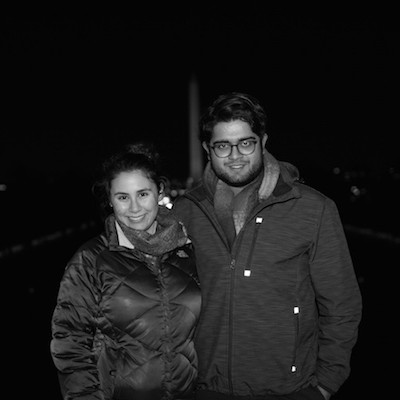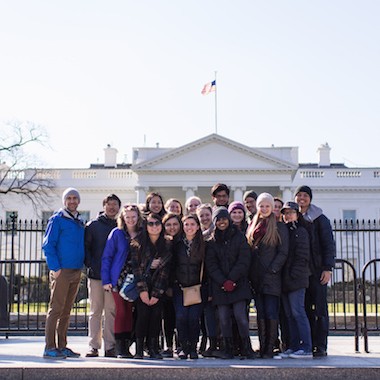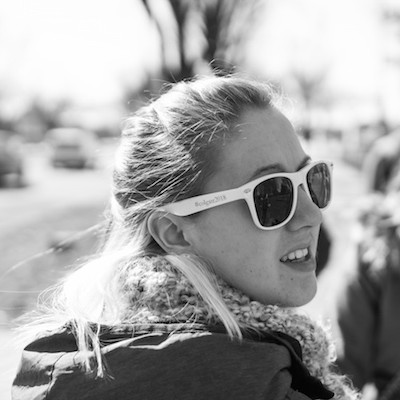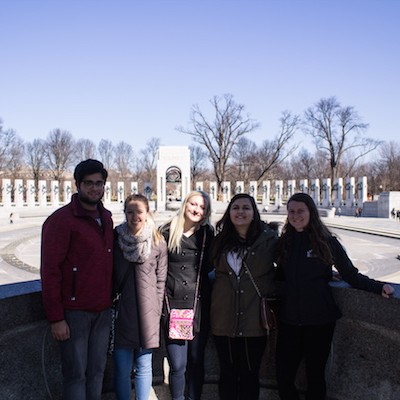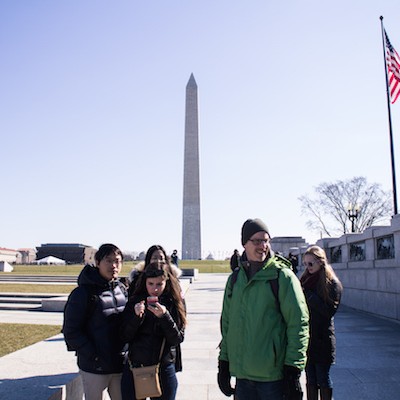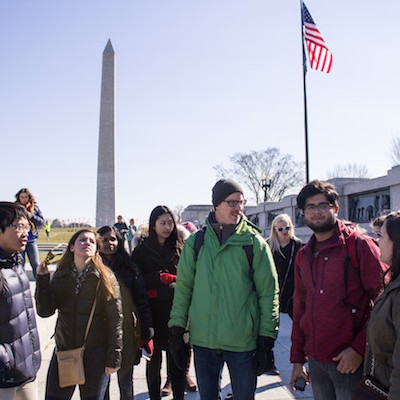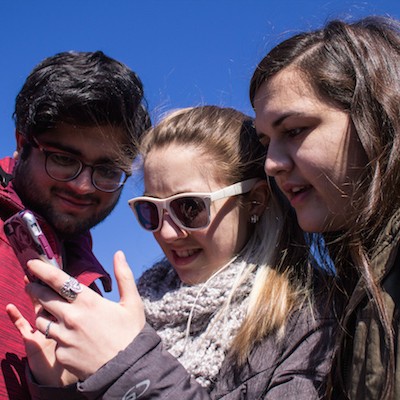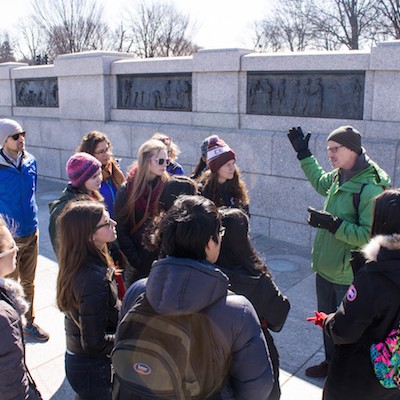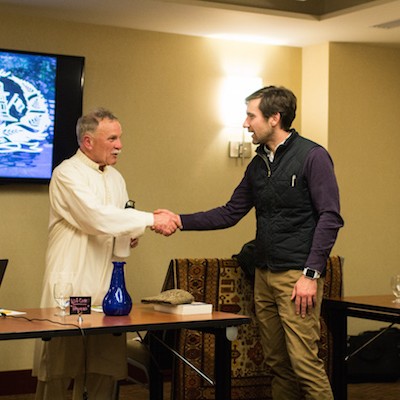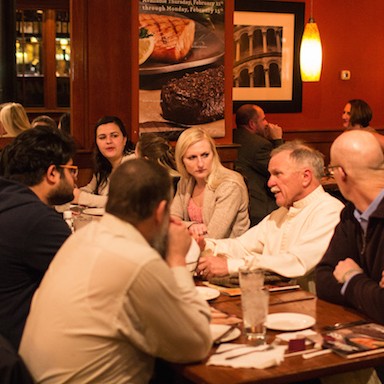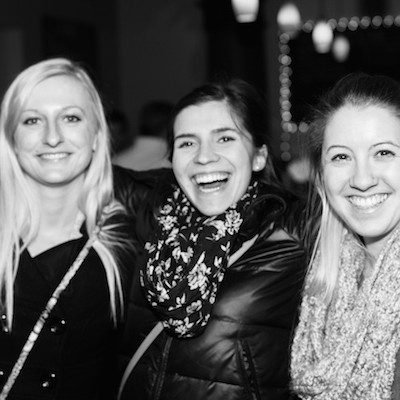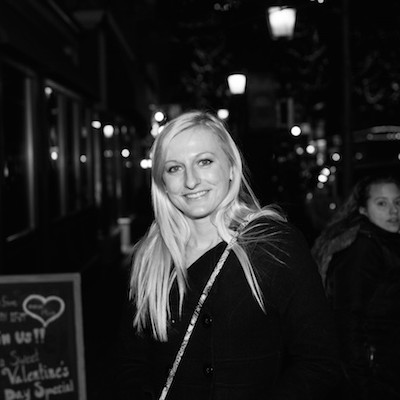This February, a group of AMS students were taken on a weekend trip to Washington D.C. The group was accompanied by Rob Nemes, Professor of History, and Peter Tschirhart, Assistant Dean for Undergraduate Scholars Programs. Some of the major highlights of the trip include visits to the Washington Monument, the World War II Memorial, and the White House. The group also attended a lecture on Afghanistan given by an AMS alumnus, Mike Smith. Below is a slideshow containing pictures from the trip, all of which were taken by Colgate student Hoang Nam Nguyen Vu ’18 (Nam Nam).
Latest Posts
Luna Zagorac ’16: Excavating in Egypt
By Evie Lawson on March 2, 2016The following post is by Luna Zagorac ’16. Zagorac used part of her AMS grant to fund her first excavation in Luxor, Egypt.
Egypt has been my passion since the age of eight. Eight seems to be a magical number for Egyptologists around the world. Some people acquired books that led them down the path of Egyptology; some watched shows, or movies; some, like myself, had their first taste of the place in person.
Coming to Colgate, the first class I rushed to sign up for was an Extended Study by the name of living Egypt. By my second semester, I knew only two things: that I had to go abroad to Egypt, and that my AMS money was going to fund my first excavation in Egypt. I didn’t know where or how, but I knew before the beginning of senior year my Indiana Jones fedora would be dusty and my hiking boots would be scuffed.
After I was admitted to the American University in Cairo as a non-degree seeking student for the Spring of 2015, I emailed everyone in the Egyptology department looking for summer excavation opportunities. After exploring several opportunities, I decided that the South Asasif Conservation Project was the place where I wanted to be that summer. It is an ongoing excavation and conservation project on the west bank of Luxor (in mid-Egypt), close to the Valley of the Kings. To me, it sounded like a dream come true.
Or so I reminded myself on my first day, fresh off the plane in the breezy 115 degrees at 7 in the morning, as I made my way to the site with only a bottle of water and a heartbeat that threatened to choke me. The local workers paid me no heed as I made my way to the supervisor’s makeshift tent, where my first meeting with Dr. Elena Pischikova took place. Now the director of the project, Dr. Pischikova had worked with Dieter Arnold at the Metropolitan Museum in the past and was full of fascinating stories. As she led me on tour of the site, my insecurities melted away from the sheer wonder.
The site encapsulates three tombs from Egypt’s Late Period: that of Karakahamun (TT 223), completely excavated and currently being rebuilt by the project, that of Karabasken (TT 391), under excavation, and that of Irtieru (TT 390). By serendipity of Dr. Pischikova’s sound judgment, upon the completion of the tour I was deposited in the court of Karabasken, where I would remain for the next six working weeks of my life.
In the court, I met my two supervisors, which I soon discovered were as hilarious as they were professional. By breakfast-time (occurring at precisely 10 am each morning and lasting until 10:30 – I could have set my watch by the Egyptian workers stopping and resuming of work), it became clear that I was the youngest person at the dig. Every other volunteer was either writing their MA thesis in Egyptology, or had participated in excavations for many years. After seeing how personable and welcoming everyone was, however, my age seemed to matter less and less. By noon (the regular stopping time, when all shade was gone and the heat grew unbearable), I was dirty, sweaty, hungry – and at ease.
Thus ended my first day on a real archaeological excavation. By the end of the week, I was assigned the sacred duty of performing all technical drawing – which no one else wanted to do. Still, I enjoyed it; even as the sun inched higher in the sky and started to burn my clipboard and my hands, there was something soothing in the precisely scaled measurements forming shapes on the graph paper. The dispassionate, technical aspect of it soothed my inner, temporarily forgotten physics major.
By the end of my six week tenure, I was the only woman left standing in the courtyard. It was the Muslim holy month of Ramadan, and most volunteers had gone home. The workers were tired, and I was left to supervise them and run the excavations in my quadrant. It was hard work, and I often wished for the ability to be at two places at once those last two weeks. But by my last Tuesday night dinner across the river – a tradition among the volunteers, as Friday was the only day we got off – I was sad to be leaving. I was exhausted, and I was impatient to see home after a long time; but I was the happiest I ever remember being.
Back at Colgate for my last Upstate New York fall, and looking at my AMS balance, I realized that, physically and emotionally taxing as excavation in Egypt is, it is monetarily cheap. Pondering what to do with the rest of my grant, I thought of the fate of the objects I’d seen come out of the ground that summer. They were in storage now, yes; but one day they would be housed in a museum, never permitted to leave Egypt by national law. And yet, my home continent of Europe is brimming with Egyptian artifacts carried out of the land of the Pharaohs long before such a law was put into place. After seeing the objects in situ, and seeing them in Egyptian museums, I thought about how differently they might be treated in European museums – not as national patrimony, but as glimmering exotica.
Thus, I set out on my AMS trip II: Return of the Archaeologist. I planned out an itinerary wherefore, with a rental car and a lot of good attitude, I could visit some of the major European museums containing Egyptian materials. My itinerary included museums in Paris, Brussels, Amsterdam, Berlin, Prague, Vienna, and Budapest. It was a packed schedule, but one I was eager to undertake.
Of course, there were some factors I hadn’t foreseen. The Louvre being closed for renovations. Fog you could cut with a knife in Germany. A remote gas station in the Czech Republic and an argument over where to put window fluid (apparently, not the into the antifreeze container). A missing passport.
A trip of a lifetime.
Yet, the defining moment happened in Berlin, as I was confronted by the glassy stare of the bust of Queen Nefertiti. In Egypt, I had visited the site from which it came; in Berlin, I gazed upon the best preserved remnant of an empire. A dynasty. A family. We still don’t know how this time period ended; and it is doubtful Nefertiti will ever be able to see her homeland ever again.
This was the pervasive attitude immediately noticeable in the displays fate allowed me access to. The museums were clean, and organized, and secure. But they told a story from a distinctly European perspective. Ancient Egypt was defined through the eyes of the white explorers that brought it to the European masses, rather than as a culture and a legacy in its own right. The Greek galleries, on the other hand, had a completely different atmosphere: the atmosphere of a glorified, rational shared past.
These issues – the issues of perspective, the question of who owns the past – are exactly what my Museum Studies class is grappling with this semester. Even in retrospect, I see museums differently; I see Egypt differently. In every context, issues of power have to be raised – and confronted – before truth can be known. And though science and museums believe themselves free of things as subjective as power and privilege, to believe so is to discount a whole new way of knowing – and a whole new body of knowledge.


